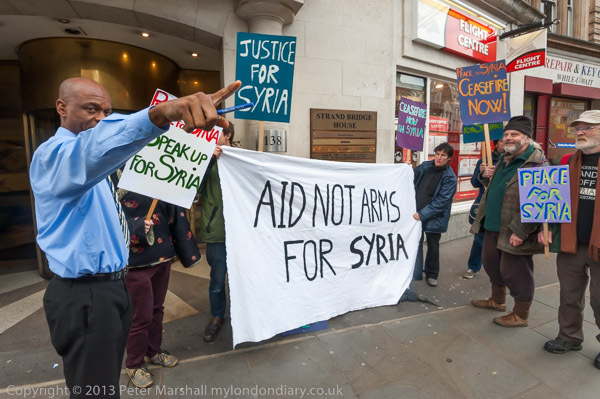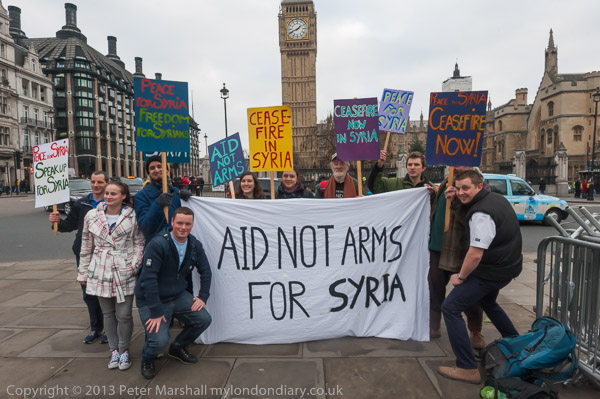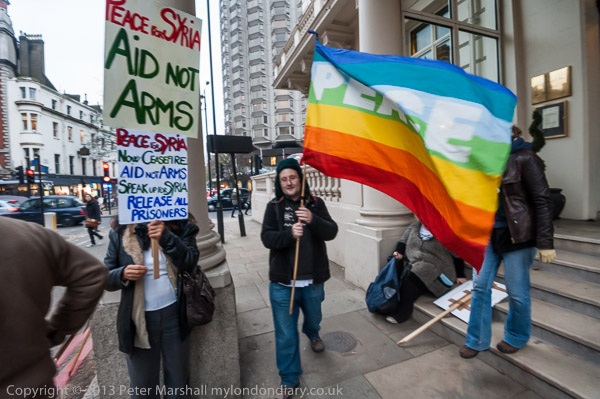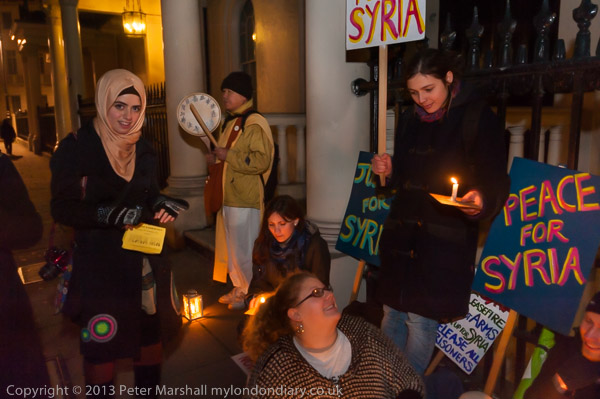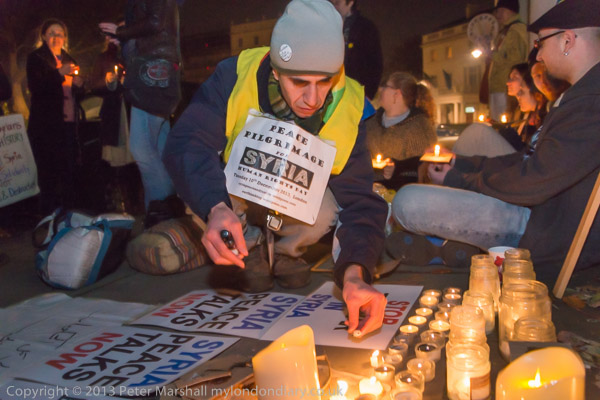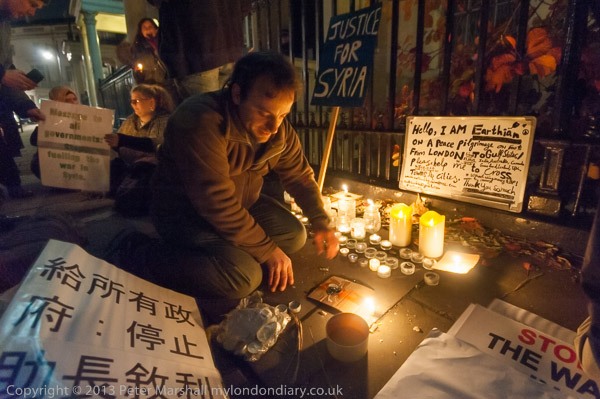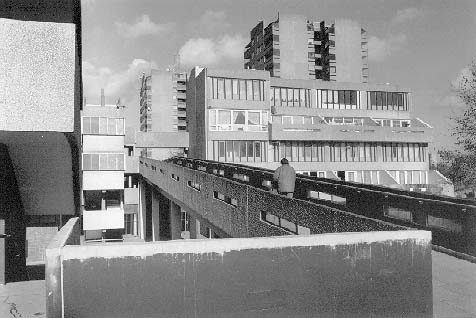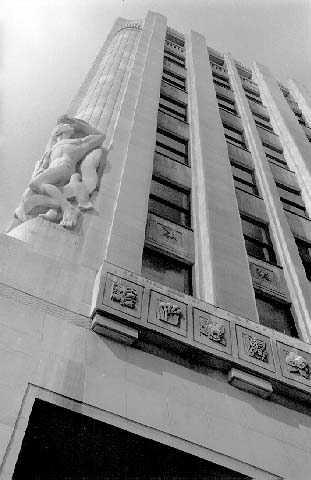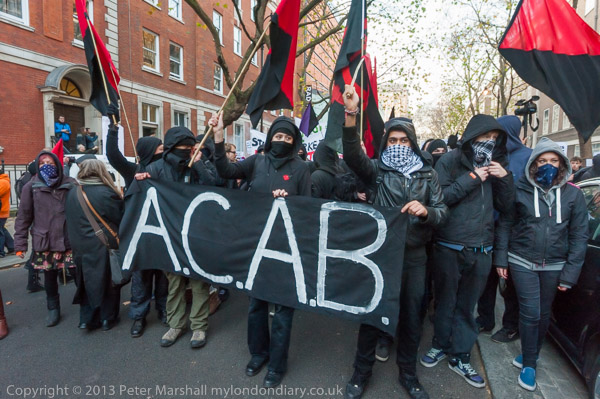
Feeling against the police was running high and was expressed in placards and banners including one referring to the well-known song
Perhaps the police actually read my stories on Demotix (usually very similar to those I post later with more pictures on My London Diary.) Actually I know some of them sometimes do, because I’ve had officers making comments to me about things I’ve written in the past. And I’ve recently sent in a Freedom of Information request and am waiting to hear what – if anything – they have about me on their files, or rather those files they are prepared to admit exist (they’ve been caught out a few times lying over such matters.)
The previous week, after Friday’s protest I’d written
I found it hard to see any reason for the large police presence and stopping them walking into Montague Place as they wanted. It did seem an incredible and pointless waste of public money, and it resulted in more inconvenience to the public than if the event had not been policed at all.
But I think in this particular case I wasn’t the only journalist make the obvious clear, and perhaps even some of the police themselves may have realised that the heavy-handed policing of protests against a police presence on campus is counter-productive.
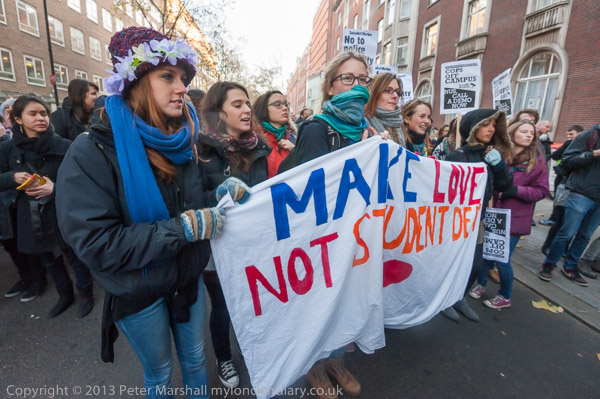
Other banners were less contentious – such as ‘Make Love not Student Debt’
So, unlike the previous week, where they came in force to London University, for the Cops Off Campus National Student Protest in exactly the same place they sensibly kept out of sight, and the protest passed off more or less peacefully, with far less mayhem than if they had turned up.
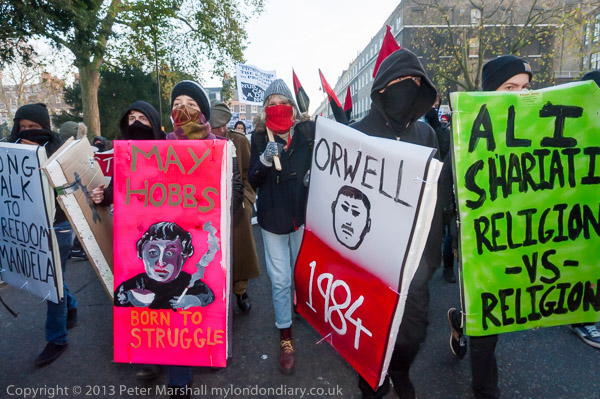
The Book Block with shields bearing the names of well-known titles for protection
There was a little damage to the gates of Senate House, and later, in an event I thought was probably staged for the press, to the doors into the entrance area of the building, when a few students attacked them using rubbish bins as battering rams. But there was no real violence and no attempt to occupy parts of the university, which would have broken the High Court injunction.
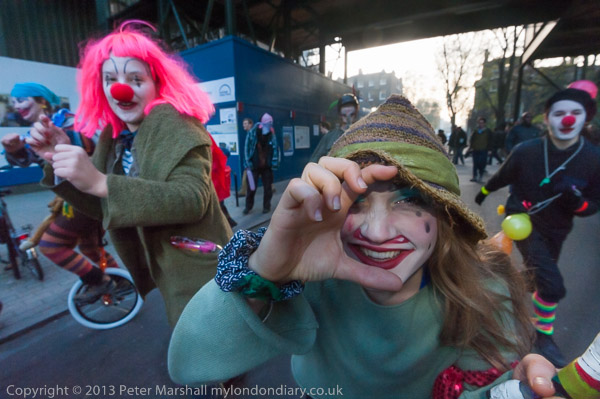
A clown mimes taking my photograph – and is caught by my flash
The protest was about a serious matter, and one which raises questions about the nature and purpose of universities that deserve proper debate, it was also an enjoyable and at times exhilarating event, with various groups enjoying themselves in their different ways, and ended with those taking part feeling a sense of achievement. It seems clear that the attempt by the London University management to stifle protest and freedom of speech and assembly has failed.
Two major issues remain to be settled; the future of the University of London Union and the proper treatment of low paid workers at the university who deserve decent conditions of work and pay. Until the management behave reasonably over these issues, protests will continue.
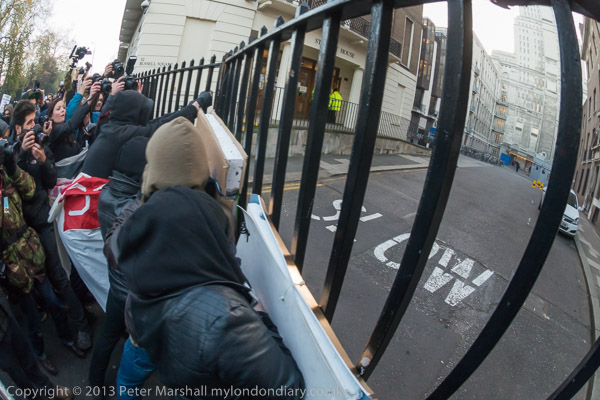
The book shields were useful in pushing against the gates
Photographically there were few problems, and it was largely a matter of being in the right place at the right time. When the students decided to go through the gates of the Senate House I had to move out of their way, and it was too crowded to get a really good view, though the fisheye did help a little.
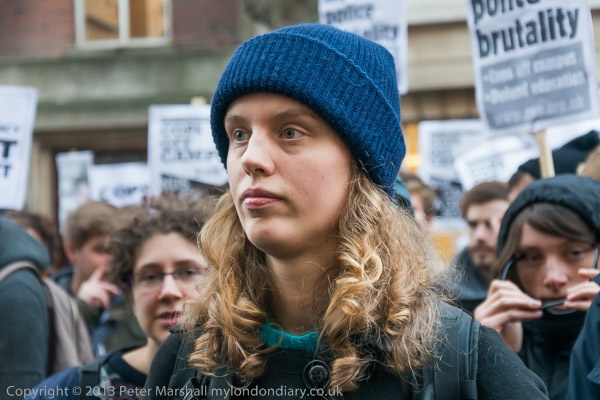
There were some interesting faces in the crowd, and as well as taking pictures of the speakers I also took some of those listening to speeches.
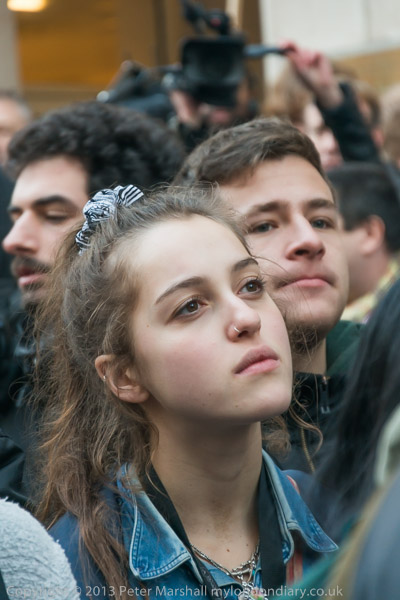
After I left to go home there were further protests around central London by some of the students, where the police did show up (if sometimes rather late) including at the Royal Courts of Justice where the inquest into the shooting by police of Mark Duggan which sparked riots in Tottenham and elsewhere was taking place. It’s always difficult to know when to leave.
